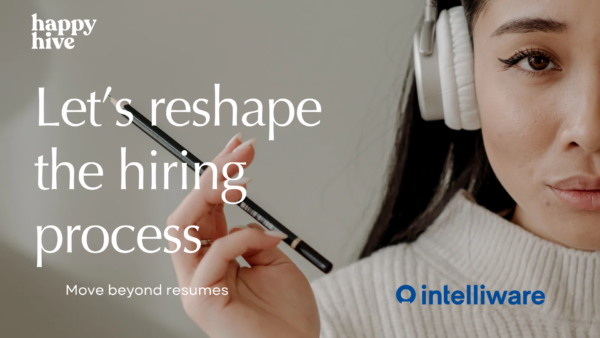A single day. Fifty minds. One mandate: build something real with generative AI tools and learn what happens when you put theory to the test. On June 12th, Electric Mind's offices buzzed with the energy of a true experiment: eight teams, drawn from every corner of the company, set out to deliver working solutions using Cursor, Copilot, and a toolkit of AI assistants. The result? Not just a handful of apps, but a new playbook for how consulting teams can thrive in the AI era.

Event Format: How the Day Unfolded
The AI Cook-off (think Iron Chef for Generative AI coding) was designed for maximum learning and cross-pollination. Over 50 participants—developers, consultants, and non-technical staff—were split into eight teams, each tasked with building an application using generative AI tools. The rules were simple: use Cursor and Copilot as your primary engines, learn as much as you can, and deliver a working demo by day's end. Judging criteria focused on business value, technical execution, and creativity.
The day kicked off with a primer from Graivy's founders Mike Lee and Ryan Favro, whose guidance on prompt engineering and model selection set the tone. As teams settled in, the office transformed into a hive of focused activity—whiteboards filled, laptops glowed, and the air buzzed with the sound of rapid iteration. The event's structure allowed for five to six hours of focused work, punctuated by collaborative check-ins and a final round of presentations where each team showcased their solution.
The Applications: A Showcase of AI-Driven Ingenuity
The Cook-off produced a diverse range of applications, reflecting the creativity and adaptability of each team. Some groups focused on rapid prototyping and requirements gathering, while others tackled infrastructure challenges or explored new ways to integrate AI into business workflows. Approaches varied from experimenting with multiple AI tools in parallel to emphasizing user experience, DevOps readiness, or the unique contributions of non-developers. Each project highlighted both the promise and the practical hurdles of building with generative AI in a real-world consulting environment.
Examples of applications created included virtual art tours of downtown Toronto, an AI agent which would help users locate available downtown parking, a note-taking application with sophisticated concept-mapping features, and even a real-time humor-bot which can liven up any conversation with a well-placed joke.
The Winning Application: Spark Draft
The standout of the day was Spark Draft, developed by the Electric Syndicate team. Spark Draft leverages AI to retrieve, synthesize, and organize information from SharePoint folders, dramatically reducing the time consultants spend searching for and compiling documents. The demo wowed judges with its business relevance, technical polish, and seamless integration into existing workflows—a testament to what's possible when AI is treated as a teammate, not just a tool.
Why We Did It: Building an AI-Driven Organization
This wasn't just a Cook-off for the sake of novelty. Electric Mind's leadership wanted to “put our money where our mouth is”, “Continuous internal upskilling across every role is key for teams to stay sharp, adaptive, and AI-fluent. We see ourselves as the next generation of AI-enabled consulting” said Chris Ford, CEO and Managing Partner at Electric Mind. The event was a deliberate move to upskill both technical and non-technical staff, foster collaboration, and gather real data on how AI coding changes the game.
Additionally, the Cookoff served as an opportunity to measure the potential productivity gains when using generative AI coding. As one participant noted, “We know AI coding is faster than traditional development, but we don't know how much faster. This was a chance to find out—and to see where the bottlenecks really are.”
Lessons Learned: New Rules for Teamwork and Delivery
1. The Driver-Navigator Model is Here to Stay
In theory, having an AI coding platform is analogous to pair programming, with each human developer having an AI ‘pair’ to assist them. In a standard team, having multiple pairs of developers working away on a single project is common place. However, when AI is introduced, the scope and throughput of each ‘pair’ is so large that collaboration becomes challenging, and merging rapidly evolving codebases even more difficult. To address this, across almost every team a new pattern emerged: only one person can "drive" the AI at a time, while others contributed ideas and support to the driver. As one team member put it, "Delegating typing to one person allowed me to observe and understand AI tools without directly interacting with the code." But this model also left quieter team members on the sidelines. Another participant noted, "Watching one person drive the AI all day was frustrating. Rotating the driver role could help keep everyone engaged."
The fix? Rotate drivers, break work into smaller chunks, and keep everyone involved. For consulting teams, this means rethinking how you staff and structure AI-enabled projects.
2. Requirements First, Code Second
A key piece of guidance provided by GrAIvy.ai was to first create detailed requirements documents, development plans, and deliverable lists which specified all aspects of the application they were trying to create. This documentation (which was generated using the AI tools) served as a rich context from which other tools could draw when creating code, tests, etc. Teams that invested time upfront to generate business requirements and clear prompts shipped working code faster. One participant shared, "We were advised to spend significant time at the beginning to generate business requirements and tasks, treating the AI as another developer."
Most teams started with a "requirements-first" approach—what would traditionally be considered waterfall. They fully specified, with the help of the AI, the requirements for the system in a written format. Only at the last moment was this plan executed by the AI and actual code generated. In a traditional setting, this would be risky, as no working code exists for a long time. But with AI, the risk is mitigated by the speed of code generation.
3. Infrastructure and Logistics Still Matter
No tool can outrun a broken pipeline, and it is impossible to plan an event around Cloud Availability forces of nature. Many teams ran into issues with NPM and other common tools that blocked progress due to an unforeseen global cloud outage. Instead of this causing a complete catastrophe as may have been the case in days past, teams simply had their AI agents re-write their applications using a tech stack which was not affected by the outage. For example, one team pivoted completely from React to Flutter in a matter of minutes – a feat which would be inconceivable even a few years ago. Other teams battled issues with Azure DevOps deployment. As one participant put it, "Having a dedicated DevOps resource embedded in each team would handle deployment issues more efficiently." This is a lesson in logistics planning for subsequent events.
Lesson: AI is only as good as your setup. Prepping licenses, sandboxes, and DevOps support turns pilot projects into production wins.
4. Expert Coaching Accelerates Learning
AI is new ground for many. The grAIvy.ai coaches didn't just answer questions—they changed the trajectory of teams. As one participant put it, "Understanding which model to use for specific tasks is crucial. I initially relied on auto mode but found that knowing the models' capabilities allowed for more effective use of AI tools."
Another team member saw the value in expert guidance: "Having experts guide the teams rather than being part of them was crucial for maintaining the right balance of support and independence."

Electric Mind: Leading the AI Consulting Shift
AI is rewriting the rules for consulting. At Electric Mind, we're not waiting for the industry to catch up. We're building, testing, and deploying AI solutions that deliver business value today.
Our engineering-led teams partner with clients to turn AI from a buzzword into a bottom-line advantage. We design, build, and support AI systems that scale, comply, and deliver: because in consulting, proof beats promise every time.

Special thanks to Mike and Ryan at grAIvy.ai for their hands-on coaching and to every team that turned a day of experimentation into a playbook for the future of AI-enabled consulting.







